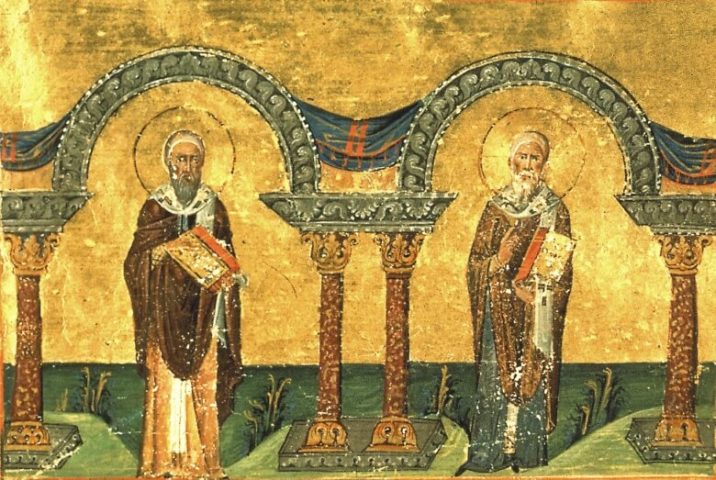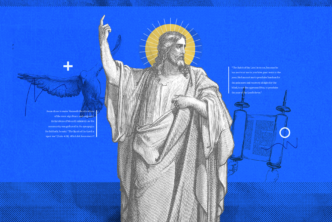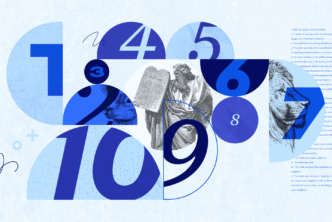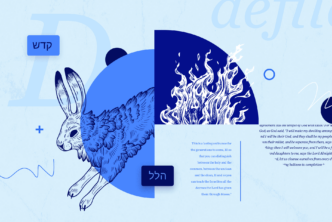Protestants are catching a wave of interest in the early Church. For many, however, this interest quickly turns into bewilderment at the massive, complex, and unfamiliar terrain of the fathers’ writings. One way to overcome this challenge is to pick one father to read and study. For this strategy to work, it is important to choose a father whose theology is reliably orthodox and biblical, and whose writing is accessible and helpful. Many of the Church fathers fit this description, but none more so than Cyril of Alexandria. His writings are an especially good place to start learning about and benefitting from the early Church.
Cyril was the bishop of the Egyptian capital city of Alexandria from the year 412 to his death in 444. He is best known for his leadership of the Church in its controversy with Nestorius, the bishop of Constantinople, over the doctrine of the incarnation. In his own lifetime, he was regarded by the vast majority of the Church as a preeminent church leader and perhaps the greatest living theologian. Following centuries, especially in the East, hailed him as the “seal of the Fathers,” whose writings summarized and solidified the central insights of the Church’s earliest centuries. This is not to say that his legacy was uncontroversial. The third ecumenical council, held at Ephesus in response to Nestorius’s errors about the person of Christ, was a tumultuous and unpredictable affair. Disagreement over Cyril’s legacy continued for more than a century, and three more ecumenical councils were devoted to issues directly related to his christological vision. Even where there was great disagreement over these matters, however, most parties were eager to demonstrate that their views were consistent with the principles articulated by the great bishop. Cyril’s stature in the East is similar to that of Augustine in the West: each is claimed as a revered authority by virtually every theologian in their respective traditions, even when disagreeing about the contemporary implications of their legacies.
Despite Cyril’s importance in the history and theology of the Christian Church, few Protestants know much about Cyril, if they have even heard of him. There are several reasons for this state of affairs.
First, and most generally, Protestants hold that “Scripture alone” is our ultimate authority, and as a misguided consequence of this conviction we have often neglected to learn from the great teachers of the Church’s past. This is easily remedied by gaining a proper understanding of the doctrine of sola Scriptura, which was not originally formulated as a rejection of all tradition, but as an insistence that tradition must be governed by Scripture.1 Another remedy would be to familiarize ourselves with the writings of great theologians like Cyril. Cyril wrote large commentaries on the Pentateuch,2 Isaiah,3 the Twelve Prophets,4 Luke,5 and John.6 They are marked by attention to the text and a deep grasp of the overall message of Scripture. His theological treatises, for instance, his work On the Unity of Christ,7 are focused on more specific questions but are likewise saturated with scriptural insight. Once we realize that Cyril is not only an ancient Church leader but also a fellow student of Scripture, we may find ourselves open to a new appreciation of his writings.
A second reason for our lack of familiarity with Cyril is that the historical awareness we Protestants do have usually extends only as far back as the Reformation. Our presentations of Church history often move so rapidly from the apostles to the Reformers that people could be forgiven for thinking that there were any Christians in the millennium and a half before Luther and Calvin. The best remedy for this is to see the Reformers’ own appreciation for earlier Christian figures. The Reformers and their heirs made extensive use of the Church Fathers in their work of developing Reformed worship, as Hughes Oliphant Old has demonstrated in detail.8 They also drew on the Fathers for their theology. For example, Edward Willis has shown that the “extra Calvinisticum” (the Reformed teaching that the Son’s divinity is not subject to the limitations of his assumed human nature) is not really distinctive to Calvin, but rather Calvin’s inheritance from the patristic christological doctrine most maturely expressed by Cyril.9
Third, even when we Protestants do study the Church before the Reformation, we are often only aware of the western part of the Church. Most of what we know about the Church before the Reformation has to do with the city of Rome and with Latin-speaking theologians, especially Augustine. This is understandable since our Protestant identity has been shaped over against the Roman Catholic Church. Nevertheless, it means that it is easy for us to miss the fact that for most of the first Christian millennium, Rome was only one of five major centers of Church leadership, and it was not always the most important of these. Cyril lived in Egypt and wrote in Greek, and in the period following his lifetime the Latin West and the Greek East grew farther apart politically and culturally, so those in the tradition of the Latin West have often missed his significance.
Reacquainting ourselves with the Greek fathers will require that we overcome this gap, as the Reformers themselves did when they took advantage of Renaissance scholars’ interest in the Greek language and the Greek patristic texts that they made newly available.10
All that said, our ignorance of Cyril is a symptom of larger problems than simple ignorance and misunderstanding. A deeper diagnosis is called for, and I suggest that it must start with the way Church history has been taught and written for most of the nineteenth and twentieth centuries. Influential historians, operating with principles drawn from Enlightenment philosophy, have studied Church history as a story of the Church allowing Greek philosophy to corrupt pure biblical teaching. One of the most influential of these historians was Adolf von Harnack, who said that “dogma in its conception and development is a work of the Greek spirit on the soil of the gospel.”11 This is his famous “Hellenization thesis.” According to Harnack, the Reformation was an effort to unfold “a new conception” of Christianity without “the old dogmas.”12 Even the Reformers themselves, according to Harnack, did not fully grasp this central point of their own movement; he felt that in his own day Protestants still had much work to do to fully jettison Greek thought and re-found the Christian religion on biblical piety and morality.13 Indeed, he hoped that his historical research would “hasten this process.”14
Several features of Harnack’s approach to Church history stem from this central concern. First, he especially faults the East for capitulating to Greek thought and continually lauds the West as the source of true biblical insight. In his telling, the theological insights of Easterners are incidental replications of points that are essentially Western in character. To give just one example, Harnack credits the “Antiochians” (Cyril’s opponents) as the only Easterns to see through the “Eastern fog of mysteries” and grasp the importance of the Pelagian controversy as a struggle for a truly “spiritual-moral” religion (as opposed to a dogmatic one). Harnack’s hero in this regard is Augustine, whom he credits with correctly identifying the spiritual and moral essence of Christianity. His villain is Greek dogma, which he blames for completely blinding the Alexandrians to the significance of the Pelagian controversy. Even the Antiochians were misled by their attachment to the dogma of Christ’s divinity, to miss the insights of Augustine and follow the Pelagians “in the direction of moralism.”15
Much could be said about Harnack’s analysis here. First, Harnack’s conceptual opposition between the “Antiochians” and “Alexandrians” has been standard historiographical fare for many decades now, but it is a badly misleading framework. The “Antiochians” to which he refers were not representatives of a mainstream tradition rooted in Syrian Antioch that simply emphasized the humanity of Christ or preferred literal exegesis to Alexandrian allegory. They were a handful of theologians, including Nestorius, his teacher Theodore of Mopsusestia, and an older theologian Diodore of Tarsus, who were condemned as unorthodox by multiple ecumenical councils for separating Christ into a divine person and an independent human person, and whose “literalism” was, in fact, a denial of the christological character of the Old Testament.16
Second, it is odd that Harnack would valorize the Antiochians’ Christology because it helped them to appreciate the Pelagian controversy and at the same time lament that their Christology led them to side with Pelagius. A more satisfactory analysis is that what Harnack calls “Antiochian” Christology is a fundamentally wrong view of the person of Christ, and thus better described as the heresy of Nestorianism. The Nestorians’ appreciation for the Pelagians is thus not a clue that their focus on Christ’s humanity opened their eyes to Western insights, but that their heretical Christology shared some deep affinities with the Pelagians’ heretical soteriology. The real issue is not a matter of Western insight over against Eastern mystery, nor of Antioch against Alexandria as two poles of Eastern thought. Rather, it is an issue of orthodoxy against heresy, whether in the realm of Christology or soteriology. In this analysis, Augustine and Cyril are both found to be champions of the same faith, each contributing fundamentally compatible insights in separate but related aspects of the faith.
This was precisely the analysis of John Cassian, an Eastern monk living in Gaul during the period, whom Pope Leo asked to write an analysis of Nestorius’s teaching.17 Cassian concluded that Nestorius was in the wrong, and he drew a connection between Nestorius’ error about the person of Christ and Pelagianism, a heresy familiar to Western Christians.18 Pelagians believed that salvation was about humans fulfilling their potential by reaching fellowship with God through moral virtue, with God providing gracious assistance. The Pelagian view of salvation fit well with the Nestorian view of Christ the Savior: a human person who can show others how to have God’s help in the life of virtue. Those who opposed Pelagius (most notably Augustine) insisted that salvation was not just God making it easier for us to practice virtue. Salvation was actually a free gift of life with God that came with a total renewal of our sinful life, inside and out. The salvation they looked for fit well with the Savior that Cyril preached: God the Son come in human flesh to rescue us from sin by his divine strength.19
The second major feature of Harnack’s approach is his habit of reducing the Church’s great dogmatic controversies to a struggle over piety (the only part of religion that matters for its own sake, in his mind) or political power (which predominates when piety is absent).20 Since he could detect no issue of piety underneath the controversy between Cyril and Nestorius, he tended to explain the dispute between them as a political rivalry between the ancient prestige of Alexandria, together with Rome, and the newly emerging influence of Constantinople. The controversy, Harnack explains, was “throughout carried on with the ambitious designs and for the purposes of ecclesiastical policy.”21 As the loser in this fight, Nestorius is portrayed as the more genial character—incompetent, perhaps, but well-meaning and sincere. He was “conceited,” yes, but “not a man with any meanness about him.”22 He was “proud and foolish,” but “in earnest.”23 He expressed himself with “great frankness,” so much so that he was “inconsiderate and imprudent.”24 All told, he was “the unfortunate bishop.”25 Harnack’s portrayal of Cyril is just the opposite. He appears as the brutal thug who would stop at nothing, including bribery and violence, to take down his opponent. “His Christianity,” Harnack sneers, “did not succeed in making him just.”26 Harnack’s narrative bears this out by portraying the Council of Ephesus and its aftermath primarily as a story of Cyril’s political manipulations, influence-peddling, and unprincipled compromise.27 The overall effect is to cast Cyril as a morally unappealing Church leader who made no important contribution to the Church’s theology.
In the last thirty years or so, the patterns laid down by Harnack have begun to come undone. A new generation of scholars has thoroughly discredited much of Harnack’s approach to studying the history of Christian doctrine. One such scholar, Robert Louis Wilken, has said that Harnack’s Hellenization thesis “has outlived its usefulness,” and that it would, in fact, be more apt to speak of early Christian thought as a “Christianization of Hellenism.”28 Liberated from this faulty historical and theological framework, scholars have produced far more balanced interpretations of the patristic tradition and more sympathetic accounts of Cyril’s contribution to it.29 A renewed interest in Cyril’s writings has led to more published translations of a broader range of his works, most notably his landmark Commentary on John.30 The picture of Cyril as an Eastern pope, wielding the levers of Alexandrian power to mercilessly crush Nestorius, while entirely missing the point of the Christian gospel because of his obsession with the technicalities of christological dogma has faded. In its place, there has emerged a picture of an immensely competent exegete, a profound and subtle theologian, a committed and energetic Church leader (some very real failings notwithstanding), and a courageous and devoted defender of the doctrine that lies at the heart of the Christian message: that the one who died on the cross is God the Son, who was born of Mary for that very purpose, to redeem us from our sin.
As a pastor who preaches every week, I personally have found great benefit from studying Cyril’s theology. His thoughtful biblical commentary, forceful theological argument, and his example of theological leadership have all been valuable to me. But above all, reading Cyril has helped me to see more clearly than I could have on my own that the heart of our faith is a person. Like many other preachers, I am always inclined to preach the concepts and events of the Gospel, without preaching Christ. Reading Cyril has taught me not merely to preach justification by faith, but to preach the one who justifies, in whom we must put our faith. He has shown me how to preach not only the doctrine of substitutionary atonement but especially the loving strength of the one who put himself in our place. Reading Cyril has also helped me to see in a fresh way the connection between preaching the attributes of God and preaching the good news of the gospel. His focus as a preacher was not, as mine has been too often, on the human aspects of Jesus’ life as it is portrayed in the Gospels but on the divine person who acted in a human nature—and therefore in a human manner—for our salvation. Cyril has also helped me to deepen my appreciation for the way that the Old Testament bears witness to Christ. His commentaries on the prophets, as well as in other writings where he deals in passing with Old Testament texts,31 show his profound perception of Christ as the center of the entire canon. Modern readers will no doubt find some of his exegetical moves perplexing, but most fears of “Alexandrian allegory” (which usually take Origen, a far less reliable and more speculative exegete, as their exemplar) will melt away before Cyril’s careful, attentive, and holistic exposition of Scripture. For his skill and insight in opening readers’ minds to the divine glory of the incarnate Lord revealed in Scripture, Protestants should acknowledge Cyril as an eminent father in the faith and eagerly read him for fresh insight into the Savior whose gospel we preach.
Here are three Logos resources Calvin recommends checking out for further reading:

Commentary on John, Volumes 1 & 2


The Story of Creeds and Confessions: Tracing the Development of the Christian Faith, chapter 5.
- An especially good recent articulation of this point is Michael Allen and Scott R. Swain, Reformed Catholicity: The Promise of Retrieval for Theology and Biblical Interpretation (Grand Rapids: Baker Academic, 2015), especially chapters 2 and 3.
- Cyril of Alexandria, Glaphyra on the Pentateuch, trans. Nicholas P. Lunn, 2 vols. (Washington, DC: Catholic University of America Press, 2018–2019).
- Cyril of Alexandria, Commentary on Isaiah, trans. Robert Charles Hill, 3 vols. (Brookline, MA: Holy Cross Orthodox Press, 2008).
- Cyril of Alexandria, Commentary on the Twelve Prophets, trans. Robert C. Hill, 3 vols. (Washington, DC: Catholic University of America Press, 2007–2012).
- Cyril of Alexandria, Commentary on the Gospel of Saint Luke, trans. R. Payne Smith (Long Island, N.Y.: Studion, 1983).
- Cyril of Alexandria, Commentary on John, trans. David R. Maxwell, ed. Joel C. Elowsky, 2 vols. (Downers Grove, IL: IVP Academic, 2013–2015).
- Cyril of Alexandria, On the Unity of Christ, trans. John McGuckin (Crestwood, NY: St. Vladimir’s Seminary Press, 1995).
- Hughes Oliphant Old, The Patristic Roots of Reformed Worship (Zürich: Theologischer Verlag, 1975).
- Edward David Willis, Calvin’s Catholic Christology: The Function of the So-Called Extra Calvinisticum in Calvin’s Theology (Leiden: Brill, 1966), 58–60. He suggests that the doctrine might be more aptly termed the “extra patristicum.”
- Evidence for this is collected in Anthony N. S. Lane, John Calvin: Student of the Church Fathers (Edinburgh: T&T Clark, 1999), 67–86.
- Adolf von Harnack, History of Dogma, 4 vols., trans. Neil Buchanan (New York: Dover, 1961), 1:17.
- Adolf von Harnack, History of Dogma, 4 vols., trans. Neil Buchanan (New York: Dover, 1961), 1:3.
- Adolf von Harnack, History of Dogma, 4 vols., trans. Neil Buchanan (New York: Dover, 1961), 1:6n1.
- Adolf von Harnack, History of Dogma, 4 vols., trans. Neil Buchanan (New York: Dover, 1961), 1:21.
- Harnack, History of Dogma, 4:171.
- Donald Fairbairn, “Patristic Exegesis and Theology: The Cart and the Horse” Westminster Theological Journal 69 (2007): 1–19, especially 10–11.
- John McGuckin, Cyril of Alexandria and the Christological Controversy (Leiden: Brill, 1994), 37. Cassian’s analysis of Nestorius’s teaching is treated in Donald Fairbairn, Grace and Christology in the Early Church (Oxford: Oxford University Press, 2006), chapters 5 and 6.
- John McGuckin, Cyril of Alexandria and the Christological Controversy (Leiden: Brill, 1994), 42.
- On the soteriological implications of Cyril’s christology, see Donald Fairbairn, Grace and Christology in the Early Church (Oxford: Oxford University Press, 2006), chapters 3 and 4.
- The conceptual opposition between politics and “Greek religious feeling” is particularly clear at Harnack, History of Dogma, 4:196.
- Harnack, History of Dogma, 4:180.
- Harnack, History of Dogma, 4:181.
- Harnack, History of Dogma, 4:181n2.
- Harnack, History of Dogma, 4:182.
- Harnack, History of Dogma, 4:189.
- Harnack, History of Dogma, 4:175.
- Harnack, History of Dogma, 4:186–190.
- Robert Louis Wilken, The Spirit of Early Christian Thought: Seeking the Face of God (New Haven: Yale, 2003), xvi. For a focused and energetic rejection of what he calls “the Theory of Theology’s Fall into Hellenistic Philosophy,” see Paul Gavrilyuk, The Suffering of the Impassible God: The Dialectics of Patristic Thought (Cambridge: Cambridge University Press, 2006). See also the significant article by John J. O’Keefe, “Impassible Suffering? Divine Passion and Fifth-Century Christology” Theological Studies 58 (1997): 39–60.
- Donald Fairbairn, Grace and Christology in the Early Church (Oxford: Oxford University Press, 2006. McGuckin, Cyril of Alexandria and the Christological Controversy (Leiden: Brill, 1994).
- Cyril of Alexandria, Commentary on John, trans. David R. Maxwell and ed. Joel C. Elowsky (IVP, 2013), 2 volumes.
- Consider the lengthy excursus in book 4, chapter 4 of the Commentary on John (vol. 1, pp.251ff) on the tabernacle, introduced with the heading: “The holy tabernacle, which led through the desert, was a type of Christ, and so was the ark that was in it and the lamp and the altars, both the altar of incense and the altar of burnt offering. These signified Christ himself.”





